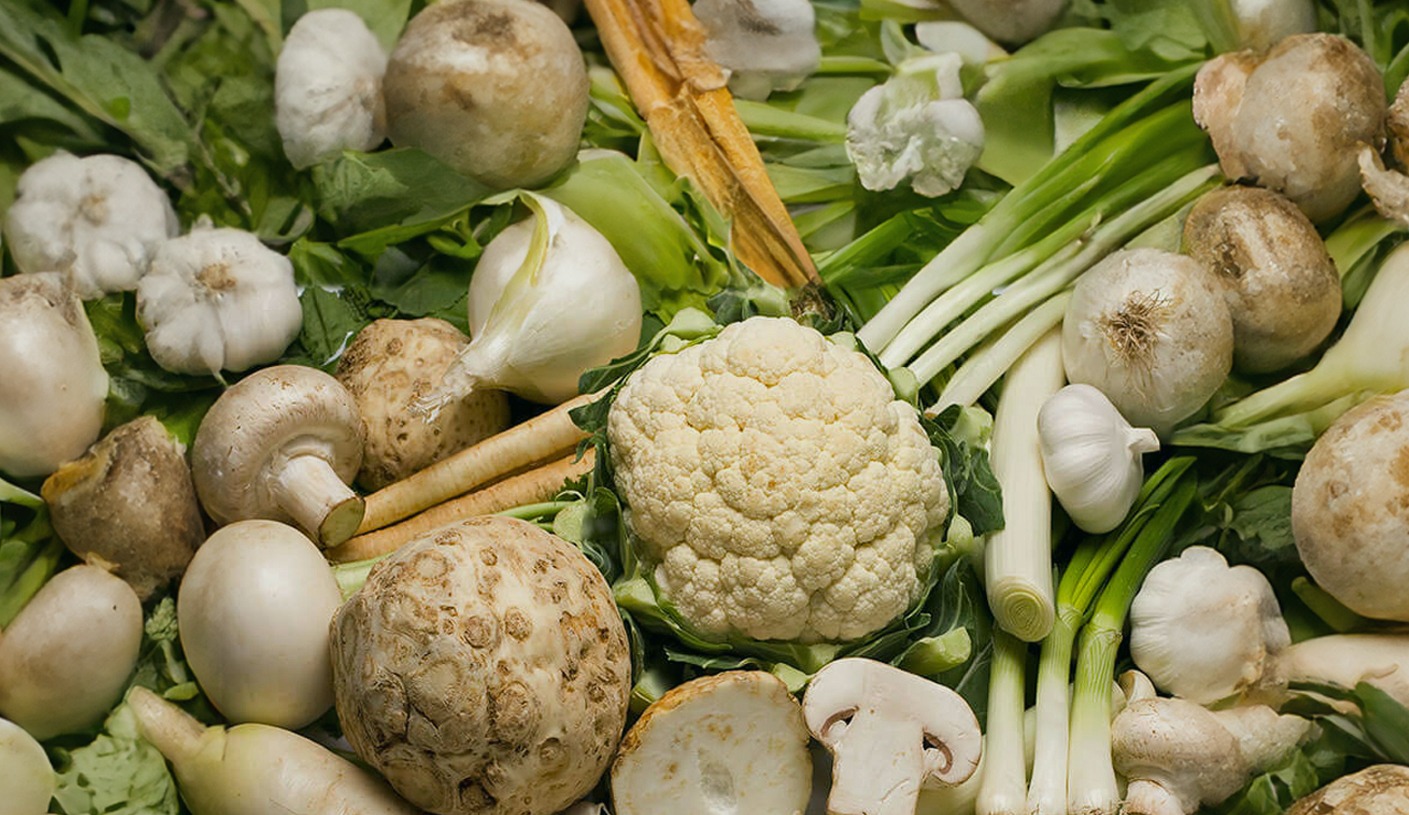Embracing Power of White Vegetables and Fruits
As a dietitian, my mantra has always been to encourage a colorful plate, incorporating a diverse range of nutrient sources. However, emphasizing color as a marker for health benefits may eliminate white vegetables such as cauliflower, onions, garlic, mushroom, shallots, turnips, white potatoes, white cabbage, white asparagus, jicama, kohlrabi, banana… Phytonutrients not only imbue foods with every color of the rainbow but also provide their flavor, smell and many of their health benefits. White plant foods contain a unique profile of phytonutrients that can support your health in some surprising ways.
Potassium Effect
Research is uncovering the satisfying and functional benefits of white vegetables like potatoes, mushrooms, onions, and parsnips. Studies show that these food options can effectively meet the nutritional needs highlighted in the 2010 Dietary Guidelines for Americans, such as potassium and dietary fiber. White vegetables, including potatoes, contribute essential nutrients to our diet and should be recognized positively in dietary recommendations.1
Fruits and vegetables, with a special nod to the humble potato and banana, stand out as excellent sources of potassium, playing crucial roles in preventing hypertension and potentially enhancing bone health. The organic potassium salts found in these foods contribute to a wide range of health benefits for the heart, kidneys, bones, and other tissues.2
Healthy Gut Microbiome
White fruits and vegetables also commonly contain high levels of vitamin C, calcium, potassium and prebiotic fiber. The fiber content is especially important for supporting a healthy gut microbiome by stimulating the growth of good bacteria. Moreover, the prebiotic fiber found in white fruits and vegetables is a key player in supporting a healthy gut microbiome. This fiber serves as nourishment for beneficial bacteria in the digestive system, promoting their growth and maintaining a balanced microbial environment. A flourishing gut microbiome is associated with improved digestion, enhanced nutrient absorption, and a reduced risk of certain diseases. Therefore, the diverse array of nutrients in white fruits and vegetables not only contributes to overall well-being but also plays a pivotal role in fortifying the body’s immune system and promoting digestive health.
Anti-inflammatory & Anti-microbial Effect
The plants of the genus Allium spp. such as garlic and onion , which are rich in allicin,have been traditionally used against conditions such as joint inflammation, constipation, infectious diseases, and parasitic infestations . Most of these beneficial effects have been confirmed experimentally in vivo and in vitro. Additionally, in vitro studies have reported that the supplementation of a formula that includes concentrated garlic and onion shows broad-spectrum antimicrobial activity against multidrug-resistant bacteria isolated from human samples, and is also effective against respiratory syndrome viruses, as reported in experimental and human studies.3
Diving deeper, let’s explore a remarkable vegetable family known as Cruciferous Vegetables. This diverse group includes cabbage, cauliflower, collard greens, horseradish, kale, kohlrabi, radish, turnips, arugula (rocket), bok choy, broccoli, brussels sprouts, and watercress. These vegetables have been the focus of numerous epidemiological studies that highlight their positive impact on human health. Higher intakes of cruciferous vegetables are associated with a reduced risk of cardiometabolic diseases, musculoskeletal conditions, and cancer.4
At the heart of the health benefits of cruciferous vegetables are glucosinolates, sulfur-containing phytochemicals responsible for their bitter taste and pungent odor. A 2012 study reported a significant reduction (between 17 and 23 percent) in the risk of colorectal, breast, kidney, esophageal, and oropharyngeal cancers with regular cruciferous food consumption.5
In conclusion, let’s broaden our perspective on a healthy diet by welcoming the diversity that white vegetables bring to the table. White foods contribute a spectrum of nutrients and health benefits that deserve a positive position in our dietary guidance. So, embrace the power of white vegetables and make your plate a canvas of vibrant health!
Busé
- Weaver, C. & Marr, E.T. (2013). White vegetables: A forgotten source of nutrients: Purdue roundtable executive summary. Adv Nutr, 4(3): 318S-326S. https://www.ncbi.nlm.nih.gov/pmc/articles/PMC3650503/ ↩︎
- Zurbau, A., Au-Yeung, F., Mejia, S. B., Khan, T. A., Vuksan, V., Jovanovski, E., et al. (2020). Relation of Different Fruit and Vegetable Sources with Incident Cardiovascular Outcomes: A Systematic Review and Meta‐Analysis of Prospective Cohort Studies. J. Am. Heart Assoc. 9 (19), e017728. doi:10.1161/jaha.120.017728 ↩︎
- García-García J, Gracián C, Baños A, Guillamón E, Gálvez J, Rodriguez-Nogales A, Fonollá J. Beneficial Effects of Daily Consumption of Garlic and Onion Extract Concentrate on Infectious Respiratory Diseases in Elderly Resident Volunteers. Nutrients. 2023 May 15;15(10):2308. doi: 10.3390/nu15102308. PMID: 37242191; PMCID: PMC10221607. ↩︎
- Manchali, S., Chidambara Murthy, K. N., and Patil, B. S. (2012). Crucial Facts about Health Benefits of Popular Cruciferous Vegetables. J. Funct. Foods 4 (1), 94–106. doi:10.1016/j.jff.2011.08.004 ↩︎
- Bosetti, C.; Filomeno, M.; Riso. P. et al. Cruciferous vegetables and cancer risk in a network of case-control studies. Ann Oncol. 2012; 23(8):2198-203. doi:10.1093/annonc/mdr604 ↩︎


